MongoDB is a problematic concept for experts in relational databases to get their heads around. Instead of tables, it uses “documents” to hold data. Rather than being an actual document, like the sort of thing that you would produce in Word, these documents are coded lists of records. Think of each record like a structure within a programming language.
The idea behind this model is that programming languages that don’t directly access the database need an SQL query to extract data in a specific format that can be fed into the program. Instead, the records in the MongoDB document are stored in a format that can be given to a function as a parameter, thus removing the need for the mediation of an SQL query.
Here is our list of the six best database backup tools:
- Ottomatik EDITOR’S CHOICE This cloud-based database backup system can cover databases created with MongoDB, MySQL, and PostgreSQL.
- N-able Backup This SaaS platform offers disk and server backup options plus file-level copying, which would enable you to backup MongoDB.
- Percona Backup for MongoDB This free specialist package for MongoDB data management can coordinate clusters of databases and distributed implementations, ensuring that all copies are consistent. It runs on Linux.
- Rubrik Backup and Recovery This backup system has specialist processes for backing up, replicating, and recovering MongoDB databases. Available for Windows, macOS, Linux, and cloud platforms.
- Actifio Copy Data Management This cloud-based system can manage MongoDB databases on-premises, and it can backup MongoDB databases by treating the copy as a replication.
- Commvault Backup and Recovery, This on-premises software package can protect MongoDB, SQL Server, MySQL, and Oracle databases, among others. It runs on Windows Server.
A MongoDB document collection is stored as a file, making it easy to copy into a backup location. When dealing with relational databases, the standard backup system needs first to get the database structure and contents into a file. Then, when repopulating the instance, the recovery process has to issues a series of SQL commands to rebuild database objects and populate tables. The backup and recovery process for MongoDB doesn’t require any of that work – it just needs files to be copied in one direction for backup and in the other direction for recovery.
In Unix and Unix-like operating systems, MongoDB files are held in /data/db. In Windows environments, the default directory for the system is C:\data\db. Your implementation might place that directory in another location with a path leading to the root of that database structure, such as E:\workingMongo\data\db.
MongoDB backup methods
It is pretty easy to just copy off the whole MongoDB database directory to some other location. However, if you use a complete server backup strategy, you will be taking the MongoDB files with it.
Another option is to get inside the MongoDB environment. This system reads the database files and presents the stored records in a meaningful way. With the strategy of extracting records for backup, you are taking the route that many SQL-based systems offer for data backup, which is the database dump. This writes out all objects and their records into a file. You then copy the set of files that the dump produces to a storage location.
The command for a database dump in MongoDB is mongodump. This writes out the database into the dump directory of the MongoDB instance file structure. It is essential to ensure that the dump directory is empty before running the command because the files that the system writes out are a complete set. If you ever want to restore the database, you need that complete set and nothing else in the dump directory. The command to put all of the data back into the database is mongorestore. Again, this operates on the files that it discovers in the dump directory.
MongoDB backup tools
You can automate the process of extracting a dump and moving the files by creating a batch job. Each extract gives you a full copy of the database. This allows you to create a version history, which would enable you to roll back to a specific point in time. For example, this would be useful if you discovered that the database had been damaged and the most recent backup occurred with that error in it.
A more straightforward way to manage the backup process is to get a MongoDB backup tool. Several backup systems give you options over how to work backing up MongoDB. Remember, you can just copy over the files, and there are backup tools that offer file backups, whole server backups, and application-specific backups.
The best MongoDB backup tools
There are many backup tools on the market, and you can spend a lot of time investigating all of them. First, however, you need a way to focus on just a few sound candidate backup systems, which is the purpose of this guide.
What should you look for in a MongoDB backup tool?
We reviewed the market for systems to back up MongoDB and analyzed the options based on the following criteria:
- A range of backup strategies such as file movements, whole disk copies, or MongoDB dumps
- The opportunity to perform complete, incremental, or differential backups
- An ability to create local backups and also transfer backups to remote storage
- On-premises options as well as SaaS packages
- A secure system with encryption protection for data transfers
- A free trial or a demo system for a no-obligation trial
- A good deal from a comprehensive backup system at a fair price
We have identified some dependable backup and recovery systems for MongoDB with this set of criteria in mind.
You can read more about each of these options in the following sections.
1. Ottomatik
Ottomatik is a SaaS platform that offers unique processes to backup MongoDB. It is called the Backup Parachute. Ottomatik runs similar services for MySQL and PostgreSQL databases. Backups are extracted automatically, and recovery is available through the system interface with a simple point and clicks action.
The Ottomatik system provides a backup history with different versions to roll back to. It is also possible to use a backup for replication purposes or migrate a MongoDB database to another system.
As an alternative strategy, you could opt for the file backup service of Ottomatik to store away copies of your MongoDB database. You can choose to backup on one of your servers on another site or a cloud service. The Ottomatik system is compatible with Amazon S3, Backblaze, Dropbox, and Google Drive.
The data transfers to backup storage and in the other direction for recovery are protected by encryption. Furthermore, the Ottomatik dashboard is resident in the cloud, and account credentials control access to it. Therefore, it is possible to set up different user accounts on the systems and allocate different permission levels.
Pros:
- Specific processes for MongoDB backup or a file backup service
- It can be used for replication and migration
- Add your cloud storage
- Scalable plan options
- Encryption protection for data transfers
Cons:
- No local agent for Windows
The Ottomatik service is offered in four plans that offer increasing levels of service. This stepped pricing structure makes the service suitable for businesses of all sizes. The main server for Ottomatik is based in the cloud, but it is necessary to install an agent program on the server that hosts your database. This on-site element also manages transmission security. These on-premises packages are only available for Linux distros. All plans are available for a 14-day free trial.
EDITOR’S CHOICE
Ottomatik is our top pick for a MongoDB backup tool because it is so easy to use. Installing the system’s local agent is very easy both for on-premises systems and cloud-based databases. The Ottomatik system takes care of getting regular backups without human intervention. The recovery process is straightforward to perform with just a point and click.
Get a 14-day free trial: app.ottomatik.io/signup
Operating system: Cloud-based
2. N-able Backup
N-able Backup has the capabilities to backup databases within the SQL Server, MySQL, and Oracle DBMSs. You might have noticed that MongoDB isn’t on that list. However, this is an excellent choice that you can use to go the file copy route for backing up the database.
N-able Backup is available for IT Operations departments, but it is specifically designed to work for managed service providers (MSPs). This field of operations has specific requirements from all of its software. For example, an MSP needs to operate software and services on behalf of client businesses. It needs to run many different accounts, keeping the data utterly separate while allowing the same technicians to access the console for all accounts. This is a multi-tenanted architecture, and N-able Backup has that.
So, if you are an MSP and need to provide a general backup service for clients, you would simultaneously be backing up MongoDB databases. N-able Backup is a cloud-based service, and it includes secure storage space to hold backups. N-able also makes sure that those storage areas are backed up, automatically giving you a secondary copy.
Pros:
- Takes file copies or backs up servers
- Offers backups to the operations system or right down to the bare metal
- Includes cloud storage space
Cons:
- No on-premises version
N-able Backup is available for a 30-day free trial.
3. Percona Backup for MongoDB
Percona Backup for MongoDB is an excellent choice because it is free. However, if you require professional support for your company insurance, you probably won’t be able to use this package because it is community-supported.
The Percona system is an on-premises package, but it can also be installed on Azure, AWS EC2, and Google Cloud Platform. The system is organized to send backup files to AWS S3 storage. However, if you have found a cloud storage system that is S3-compatible, that will work, too.
The Percona backup service won’t work on standalone databases – they have to be replicated. The Percona strategy is to treat the backup service as a replicated version of the original database. However, don’t worry; it is easy to alter the setup of your database to change its mode. Also, the Percona service doesn’t just rely on file copies or a database dump.
Pros:
- Free backup service for MongoDB
- Back on-premises or cloud-based databases
- Backup to cloud storage
Cons:
- No professional support
- No version for Windows
A few shortfalls in the Percona option are that the system is only available for Linux – there is no Windows version. Another problem is that it is a command-line system without a graphical user interface. However, remember that you don’t have to pay anything for this package—download Percona Backup for MongoDB for free.
4. Rubrik Backup and Recovery
Rubrik has excellent capabilities for managing data held in relational databases, and it acquired equal expertise in NoSQL systems when it bought Datos IO in 2018. The Rubik Cloud Data Management platform includes a Backup and Recovery module that can manage the protection of MongoDB databases.
This package has many deployment options and backup configurations. On-premises, it can install directly on a server’s operating system or a hypervisor. The package is also available as a service on major cloud platforms. You can choose to backup to a local network file system (NFS) or object storage, and it is also compatible with the primary cloud storage services – AWS, Google Cloud Platform, and Azure.
Rubrik cuts down on data redundancy in its backup copies through a deduplication process that spans the contents of many nodes. In addition, the system offers point-in-time recovery, meaning that you get a list of backups to roll back to.
Pros:
- A wide range of deployment options
- A choice of local or cloud backup targets
- It saves several rollback points
Cons:
- No incremental backup option
The on-premises version of Rubrik Back and Recovery will run on Windows, macOS, and Linux. The system can be assessed with a virtual demo.
5. Actifio Copy Data Management
Actifio is a data management system that applies virtualization to data storage and distribution. The system is a little like an overlay that makes data stores appear to be local when they are, in fact, centralized. This is a cloud-based system.
The Actifio service can manage MongoDB systems, and the entire Copy Data Management platform includes data backup and recovery mechanisms. While making the central, cloud-resident MongoDB database available anywhere in the corporation, the system also relates a second live copy of each database instance through a replication service.
As well as managing MongoDB, Actifio can manage and backup databases created with Oracle, SQL Server, SAP HANA, and PostgreSQL. The Actifio service is charged for by subscription. However, remember that this isn’t just a backup and recovery service – you get the entire data management system. The subscription rate is based on the data throughput for the whole operation of the database.
Pros:
- Creates a virtualized data distribution system
- Works very quickly for both backup and recovery
- Scalable pricing to suit businesses of all sizes
Cons:
- No free trial
Effectively this is a pre-paid metered service, so you have to estimate your complete requirement over a year when you pay for the system. Your credit can be used for multiple instances on many sites and cloud platforms.
6. Commvault Backup and Recovery
Commvault Backup and Recovery has capabilities for a long list of applications and databases. It can backup MongoDB and also DB2, Oracle, PostgreSQL, Hadoop systems, among others. The package is also available for backing up cloud database services.
The Commvault service is very comprehensive and offers file backups and whole disk or server backups, which provides another strategy for backing up MongoDB instances. In addition, Commvault offers a range of data management services, including database replication and migration mechanisms, which can be run off the backups that the system stores.
The backup and recovery service can be laced into a comprehensive Commvault MongoDB management service.
Commvault implements MongoDB backups and data recovery process through the mongodump and mongorestore commands. In addition, the service saves a series of copies, providing several point-in-time documents to roll back to.
The Commvault Backup and Recovery system can manage several instances held on many sites for your business. This is configured as a central server and agents on each database host.
Pros:
- Uses native MongoDB backup systems
- Consolidates processing for many instances running on many hosts
- It offers a point-in-time rollback option
Cons:
- It doesn’t include cloud storage space
The server installs on Windows Server, and the agents are available for Unix, Linux, Windows, and Windows Server. Additionally, the Backup and Recovery service can be assessed through a demo system.
L’article 6 Best MongoDB Backup Tools est apparu en premier sur Comparitech.
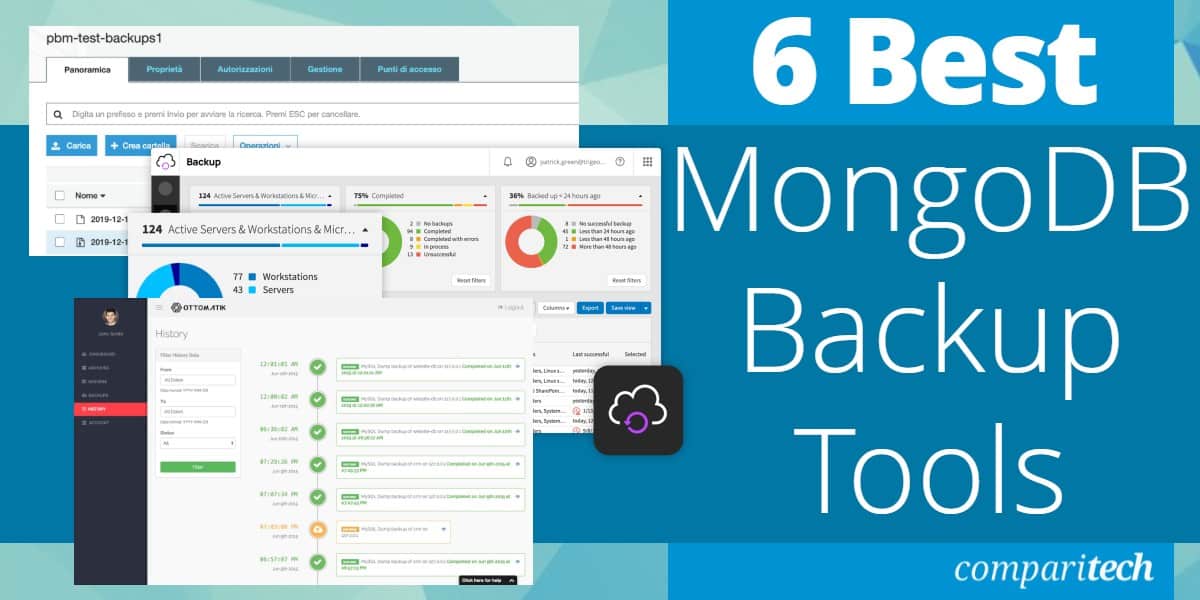
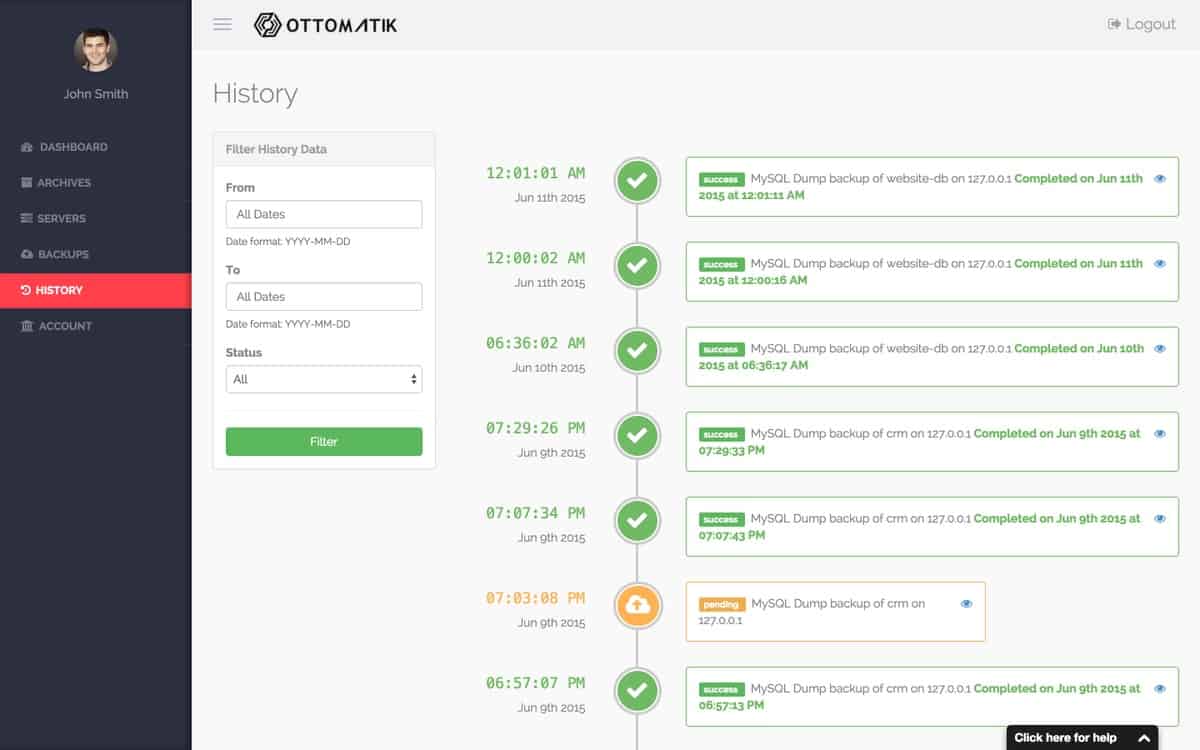
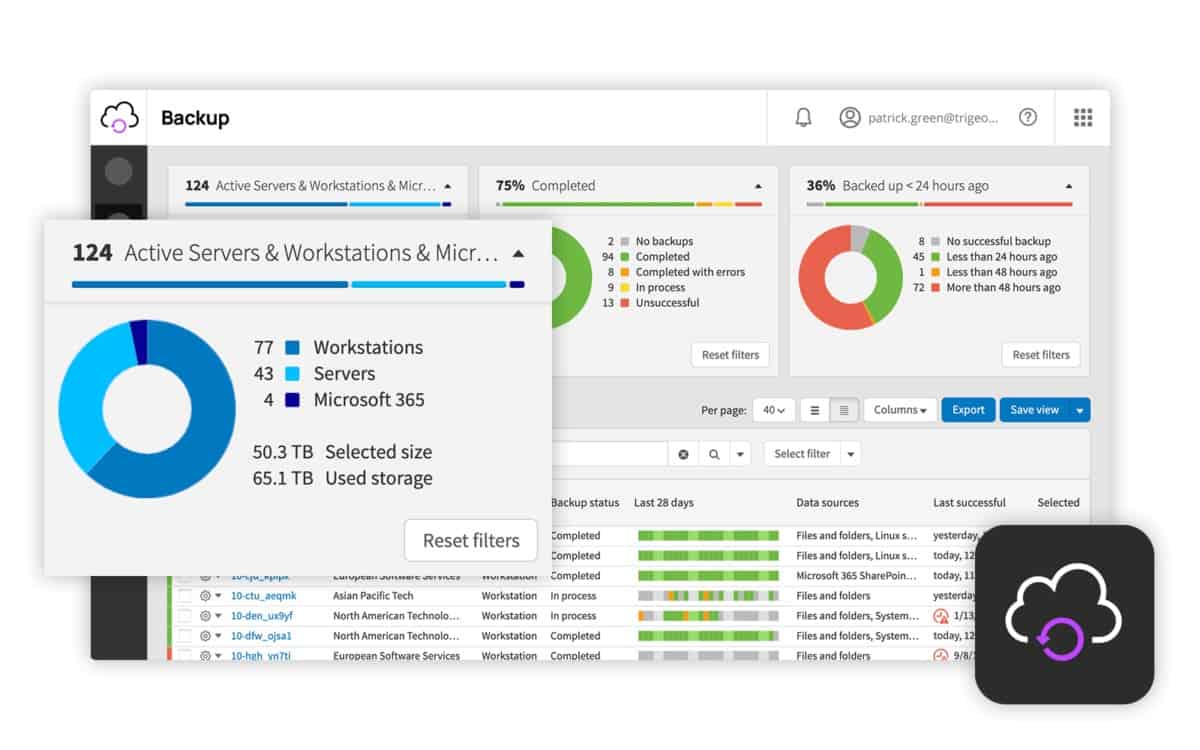
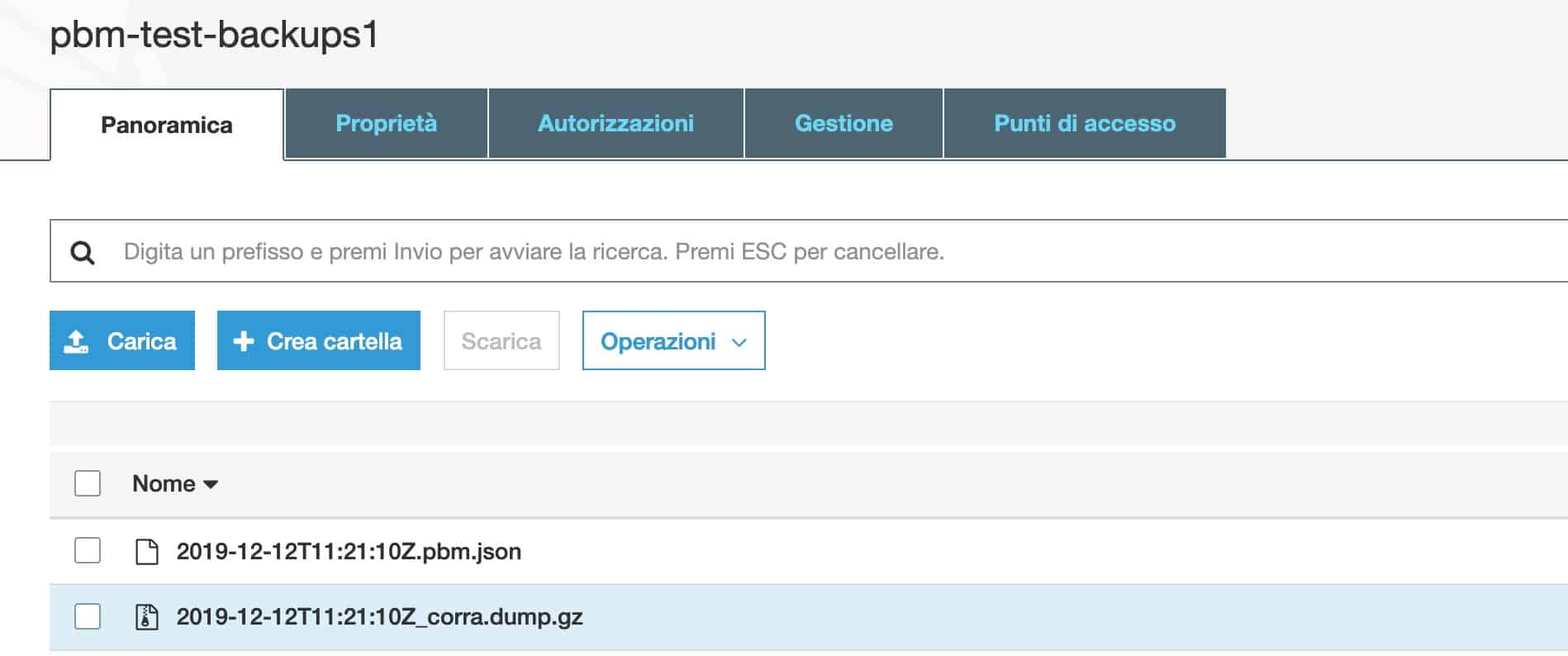
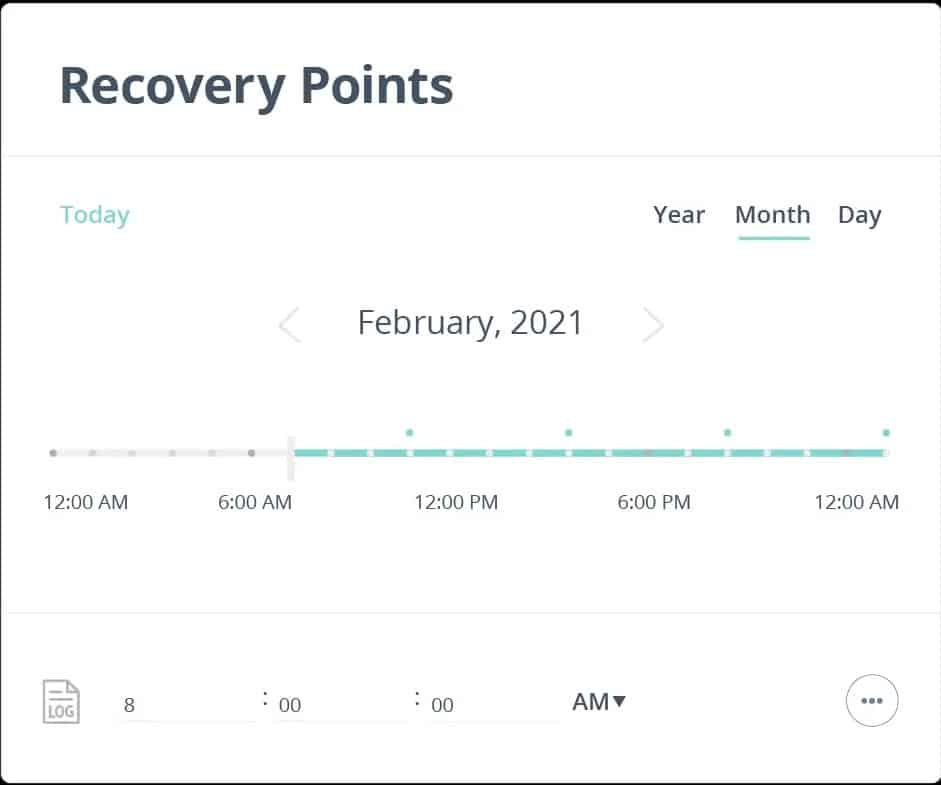
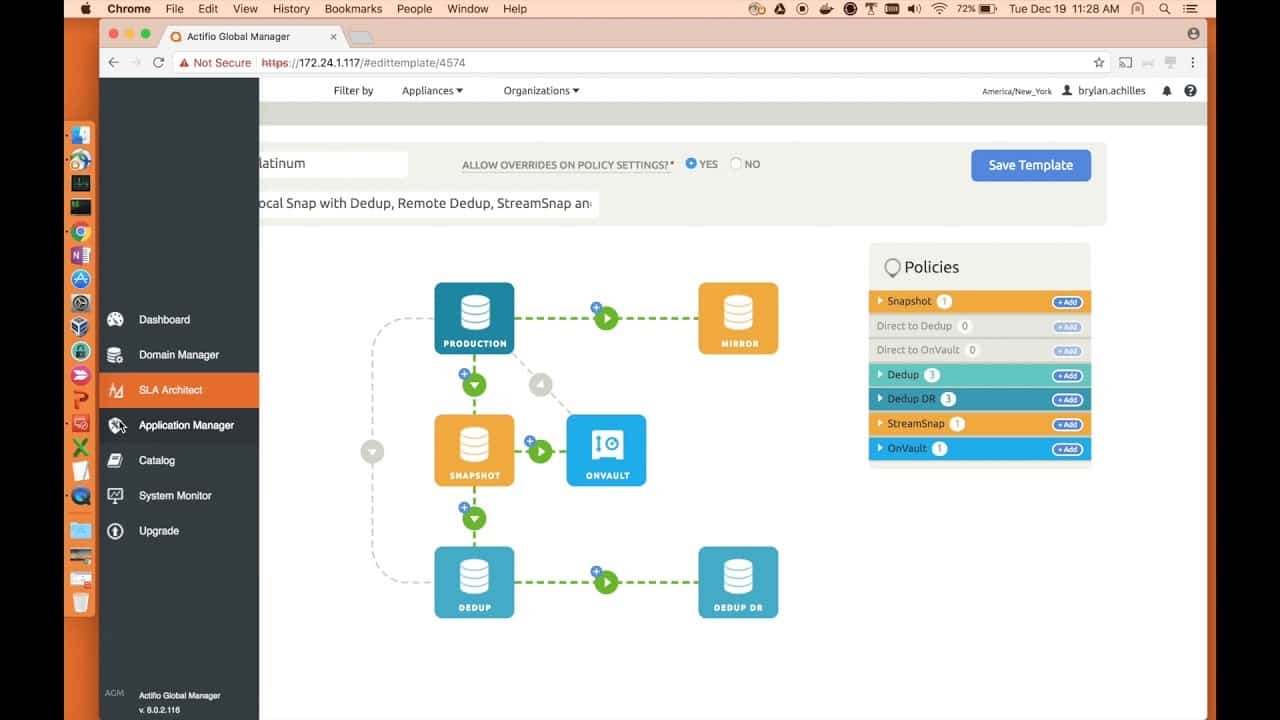
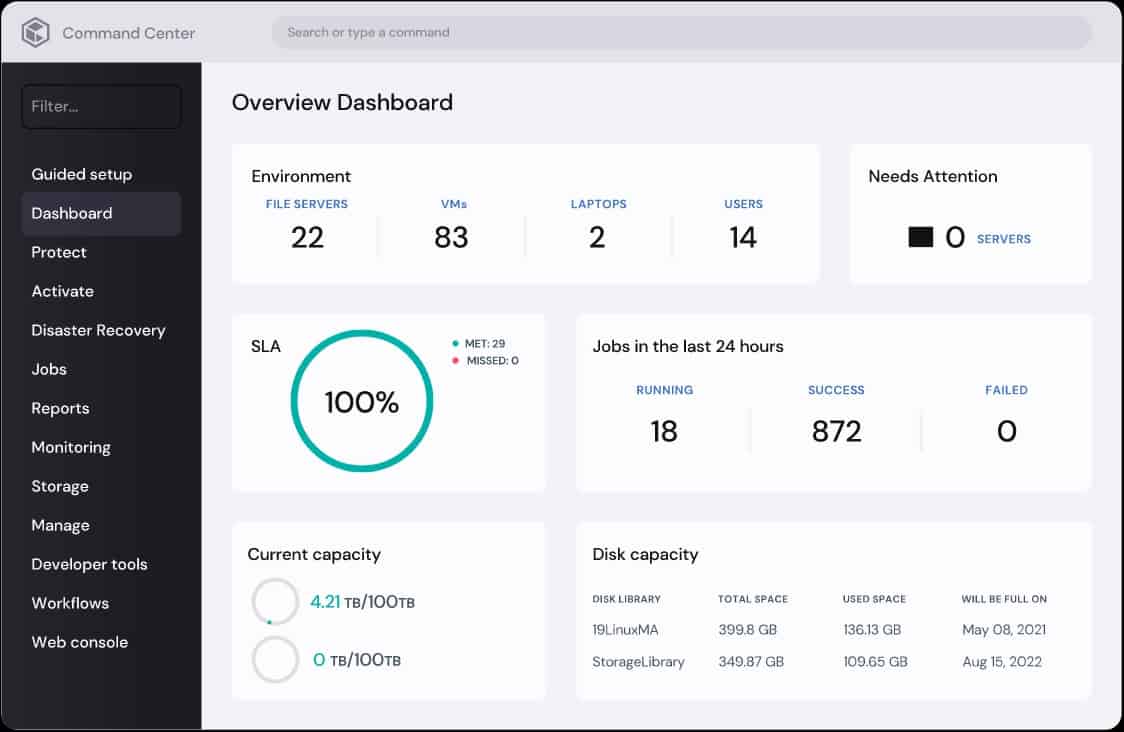
0 Commentaires